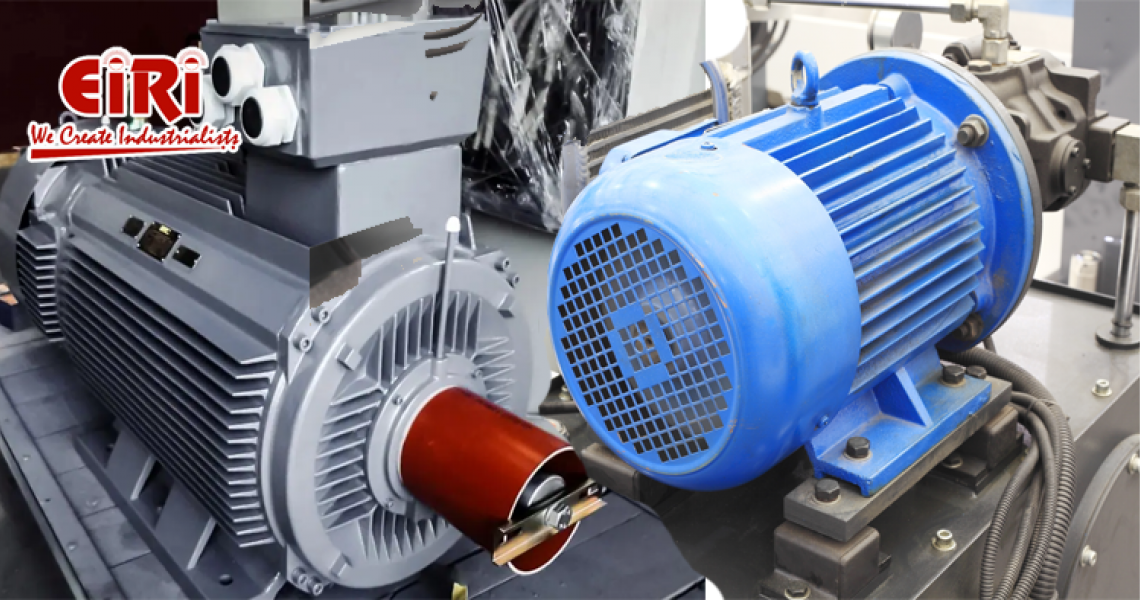A Comprehensive Guide to Induction Motor Manufacturing Business

The world of machinery and industrial operations relies heavily on the efficiency and reliability of electric motors, with induction motors playing a pivotal role. The Induction Motor Manufacturing Business is a dynamic sector that fuels the functioning of diverse applications across industries. This article delves into the intricacies of this industry, providing an overview, market segmentation, and insights into both single-phase and three-phase induction motors.
The Induction Motors Market, valued at USD 19.8 Billion in 2022, is projected to reach USD 44.8 Billion by 2032, driven by the surging demands in automobile manufacturing and growing industrial applications.
The Induction Motor Manufacturing Business is at the core of the global electrical machinery industry. Induction motors are widely used due to their simple design, robust construction, and ability to provide a steady power supply for various applications. From powering household appliances to driving industrial machinery, induction motors are ubiquitous in their applications.
At the nexus of the global electrical machinery industry lies the Induction Motor Manufacturing Business, a cornerstone essential to the functioning of myriad applications. Renowned for their uncomplicated design, sturdy construction, and steadfast power delivery, induction motors occupy a central role in diverse sectors. Their ubiquity spans from energizing household appliances to propelling the intricate machinery of industrial operations. In essence, the Induction Motor Manufacturing Business stands as the backbone of the electrical machinery realm, powering the seamless operation of modern life and industry alike.
Single-Phase Induction Motor
Single-phase induction motors are a fundamental component in residential and small-scale industrial applications. They are characterized by a simple design, making them cost-effective and suitable for powering appliances like fans, pumps, and compressors. A workhorse in the realm of electric motors, the Single-Phase Induction Motor stands out for its simplicity and versatility. Operating on a single alternating current (AC) phase, this motor type finds extensive use in various applications, showcasing a design that balances efficiency with uncomplicated construction.

Design and Functionality:
Applications:
- Household Appliances: Single-phase induction motors power a myriad of household appliances, including fans, air conditioners, refrigerators, and washing machines. Their efficiency and cost-effectiveness make them the preferred choice for manufacturers aiming to deliver reliable performance in everyday appliances.
- Small Industrial Machinery: In small-scale industrial settings, single-phase induction motors find application in machinery such as pumps, compressors, and conveyors. Their straightforward design and ease of integration make them suitable for powering equipment with moderate power demands.
- Commercial Ventilation Systems: Commercial spaces often utilize single-phase induction motors in ventilation systems. These motors efficiently drive fans and blowers, ensuring proper air circulation and maintaining comfortable indoor environments.
- Agricultural Equipment: Single-phase induction motors are employed in various agricultural applications, including water pumps and small-scale machinery. Their adaptability to varying power sources makes them practical for remote or off-grid agricultural operations.
Market Demand:
- Residential Sector: The residential sector represents a substantial market demand for single-phase induction motors, primarily driven by the widespread use of appliances like fans, air conditioners, and refrigerators. As urbanization and population growth continue, the demand for these motors in residential applications remains robust.
- Small and Medium Enterprises (SMEs): Small and medium enterprises, especially those engaged in light manufacturing or processing activities, contribute significantly to the market demand. Single-phase induction motors power machinery in these setups, providing a cost-effective solution for diverse industrial processes.
- Agriculture and Rural Applications: In agricultural and rural settings, the demand for single-phase induction motors is propelled by their use in water pumping systems, small machinery, and other applications essential for farming practices. Their adaptability to varying power sources makes them suitable for off-grid agricultural operations.
Three-Phase Induction Motor:

Design and Functionality:
Applications:
- Industrial Machinery: The hallmark of the Three-Phase Induction Motor lies in its extensive use in industrial machinery. From powering conveyor belts to driving large compressors and pumps, these motors are the backbone of heavy-duty applications requiring robust and continuous performance.
- HVAC Systems: Heating, Ventilation, and Air Conditioning (HVAC) systems often employ three-phase induction motors to drive fans and blowers. Their ability to deliver a constant and controlled flow of air makes them ideal for maintaining optimal conditions in large commercial and industrial spaces.
- Electric Vehicles: In the realm of electric vehicles, three-phase induction motors play a crucial role. Their high efficiency and reliable performance make them a preferred choice for powering the traction systems in electric cars and buses, contributing to the ongoing shift towards sustainable transportation.
- Renewable Energy Systems: Three-phase induction motors find application in renewable energy systems, such as wind turbines. Their ability to handle variable loads and operate efficiently in diverse conditions makes them suitable for converting wind energy into electrical power.
- Heavy Industries: The demand for Three-Phase Induction Motors is particularly pronounced in heavy industries such as manufacturing, mining, and construction. These motors power an array of machinery, including crushers, mills, and large-scale processing equipment, where reliability and durability are paramount.
- Commercial Infrastructure: Commercial infrastructure, including shopping malls, office buildings, and data centers, relies on three-phase induction motors for HVAC systems and other critical applications. The demand in this sector is driven by the need for efficient and continuous operation.
- Electric Vehicles Market: With the growing emphasis on electric mobility, the demand for three-phase induction motors in the electric vehicles market is on the rise. Their efficiency, simplicity, and ability to provide high torque at low speeds contribute to their popularity in this burgeoning sector.










